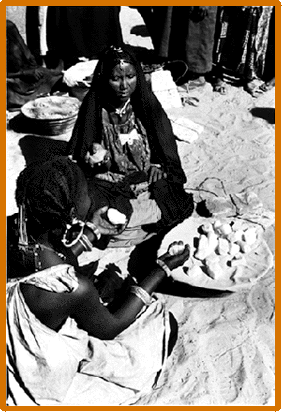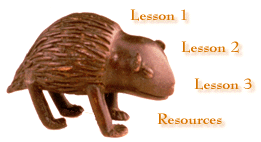

In modern society, trade transactions are often hidden in computers behind the doors of banks and mail-order companies. It is possible to buy a house, a ticket, or even a pair of shoes without ever meeting the seller face-to-face or passing money from one hand to another. To understand the meaning of currency and to appreciate why precise weights and measures were once necessary for fair trade, it is useful to examine trade practices in Africa several hundred years ago when trading transactions were quite visible and direct.
For more than four-hundred years, the Akan people of Ghana in West Africa used a currency based on tiny grains of gold called gold-dust. This very desirable currency made the Akan a valued trading partner to North African traders who crossed the Sahara Desert by camel caravan and to sea-faring Europeans who arrived on Africa's Atlantic Coast in ships laden with goods. The Akan were able to enrich their own lives by trading for goods with people of vastly different climates and cultures.
These lessons explore the monetary system of the Akan. Exploring the historic role of gold-dust in African trade will help students understand the basic idea of currency and give new significance to the nickels, dimes, and quarters in their own pockets. more essay...

Lesson 1 || Lesson 2 || Lesson 3 || Resources
What Is Currency? Lessons from Historic Africa covers the following | |
Subjects: |
Standards: |
Grades: | |
Please send any comments to educate@si.edu.
